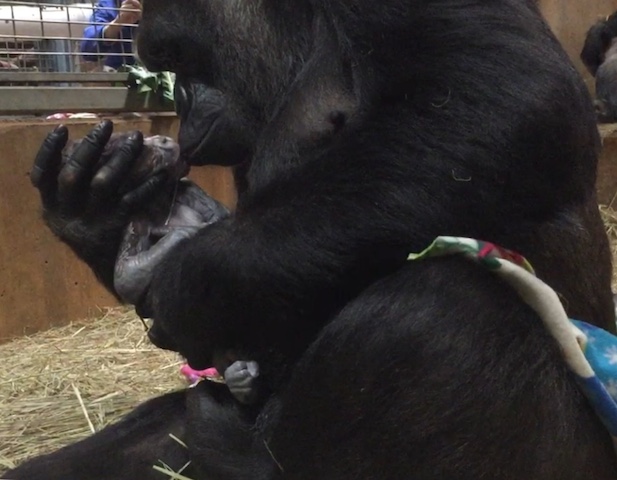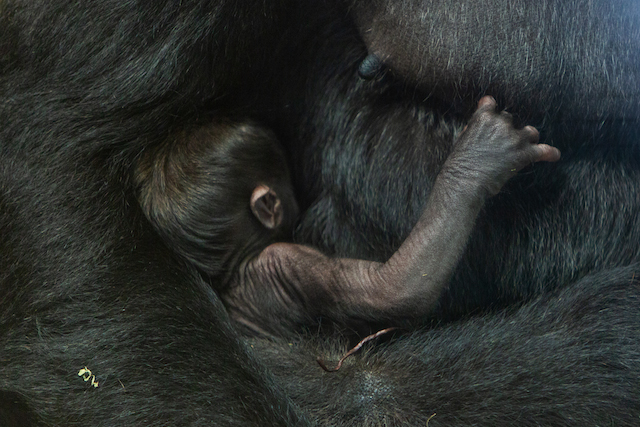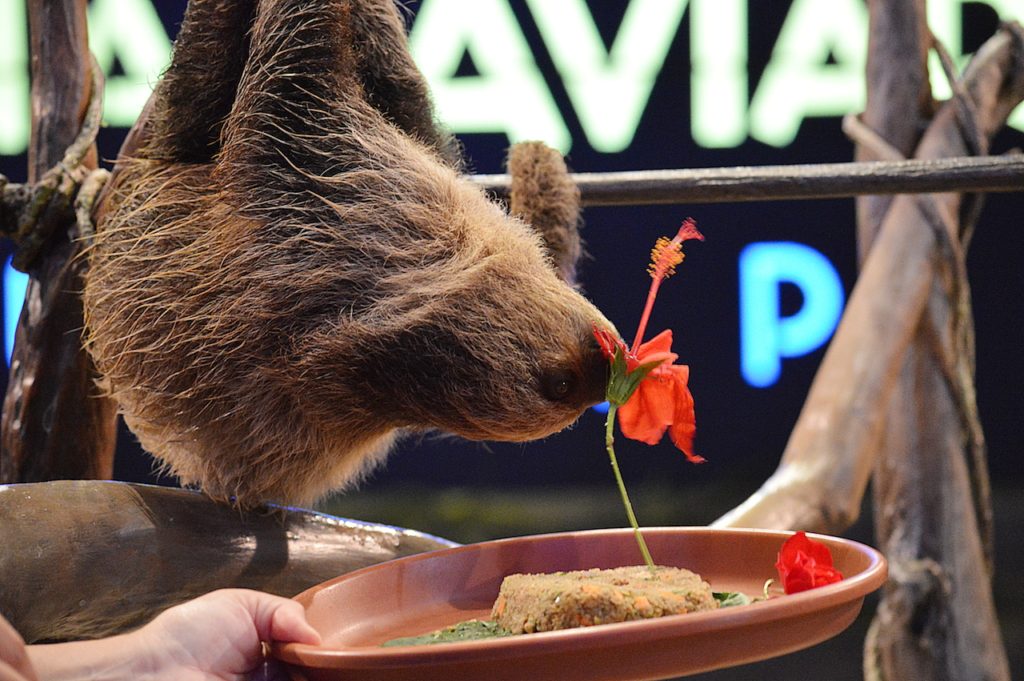A mother’s love has no boundaries.
So when Calaya, a western lowland gorilla, gave birth over the weekend to Moke, officials at the National Smithsonian’s National Zoo and Conservation Biology Institute soon observed the power of love.
The new mother has been captured on video cradling and kissing the newborn.
“Animal care staff have observed Calaya nursing the infant who has been clinging closely to his mother, and they are cautiously optimistic that the newborn will thrive,” the facility said in a statement. “Animal care staff are leaving Calaya to bond with and care for her baby without interference.”
❤🦍 We’re thrilled to share western lowland gorilla Calaya gave birth to a male at 6:25 p.m. 4/15. His name, Moke, means “junior” or “little one” in the Lingala language. Keepers report that Calaya has been caring for her infant & are optimistic he will thrive. #GorillaStory pic.twitter.com/qeoJgw57gi
— National Zoo (@NationalZoo) April 16, 2018
Moke is the first male western lowland gorilla born at the zoo in nine years.
Born at 6:25 p.m. on April 15, Moke (pronounced Mo-KEY), means “junior” or “little one” in the Lingala language.
Calaya, his 15-year-old mother, was bred to a 26-year-old male named Baraka last summer as part of the Association of Zoos and Aquariums’ Species Survival Plan.
The number of wild western lowland gorillas has dropped by an estimated 60 percent in the past two decades, according to experts. They are considered critically endangered and threatened by poaching an disease.
Using a standard human pregnancy test, the zoo announced Calaya’s pregnancy Nov. 3.

“The birth of this western lowland gorilla is very special and significant, not only to our Zoo family but also to this critically endangered species as a whole,” Meredith Bastian, curator of primates said in a statement. “The primate team’s goal was to set Calaya up for success as best we could, given that she is a first-time mother.”
Animal keeper Melba Brown helped teach maternal behaviours by showing her photos of other mother gorillas. She was also given a plush gorilla toy to touch and kiss.
Brown also trained Calaya to present her chest.
That way keepers could place the plush gorilla up to her breast to “nurse.”
🦍 Gorillas Calaya & Moke are bonding in the Great Ape House. Mom is providing excellent care, nursing & cradling Moke closely. Baraka, Mandara & Kibibi are very interested in Moke! #GorillaStory pic.twitter.com/uhSPbnvJS5
— National Zoo (@NationalZoo) April 16, 2018
“This infant’s arrival triggers many emotions—joy, excitement, relief—and pride that all of our perseverance in preparing Calaya for motherhood has paid off,” Brown said. “We will provide support to her if need be, but I have every confidence that Calaya will be a great mom to Moke.”

So far, it’s going well.
So well, the Great Ape House is now open to visitors.
But if motherhood falters, there’s still the troop to pick things up.
Her mixed troop of males and females includes an adult female named Mandara.
“In the event that Calaya was unwilling or unable to care for her infant, keepers prepared Mandara, an experienced mother of six, to act as a foster mother as a precaution,” the zoo said. “Previously, Mandara raised Baraka as a foster offspring shortly after his birth.”

Be well, baby Moke. The world is watching.
Mom and baby are doing great and The Great Ape House is now open to visitors! Come meet Moke, the 2-day-old baby gorilla. 😍🦍♥
Read more about Moke’s birth >> https://t.co/l9X72uJimF— National Zoo (@NationalZoo) April 17, 2018
Photos National Zoo




